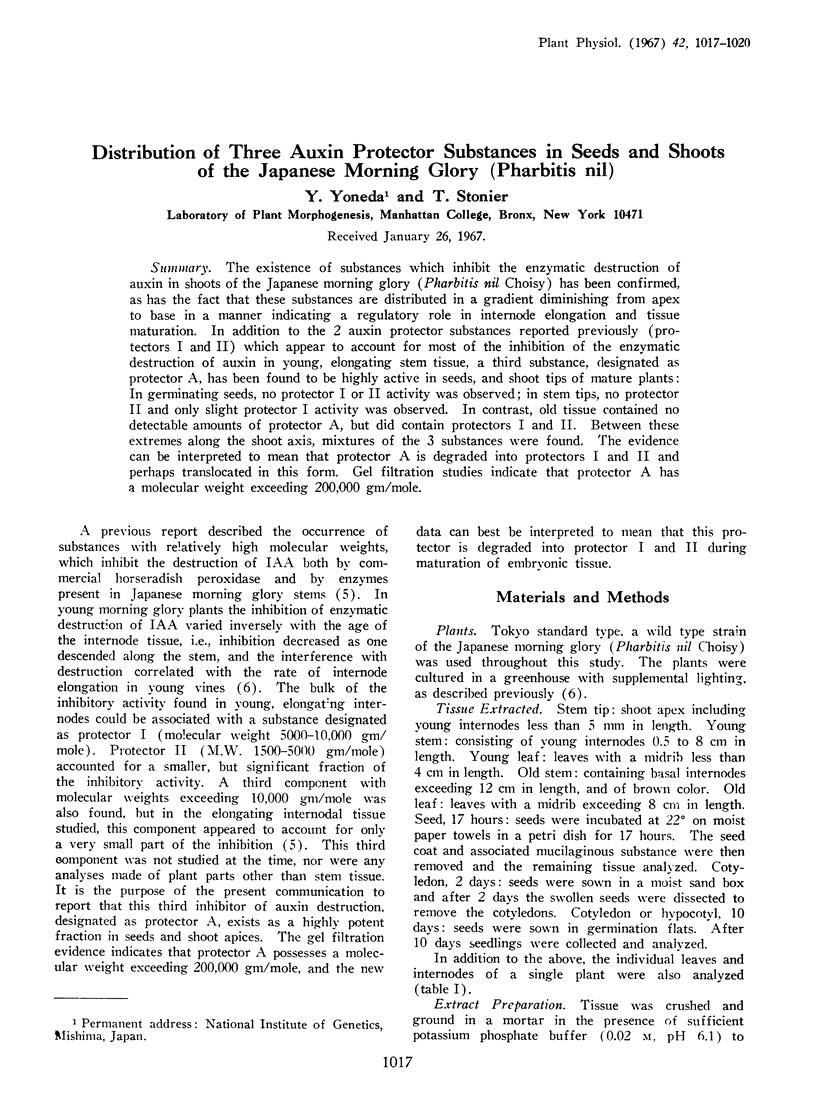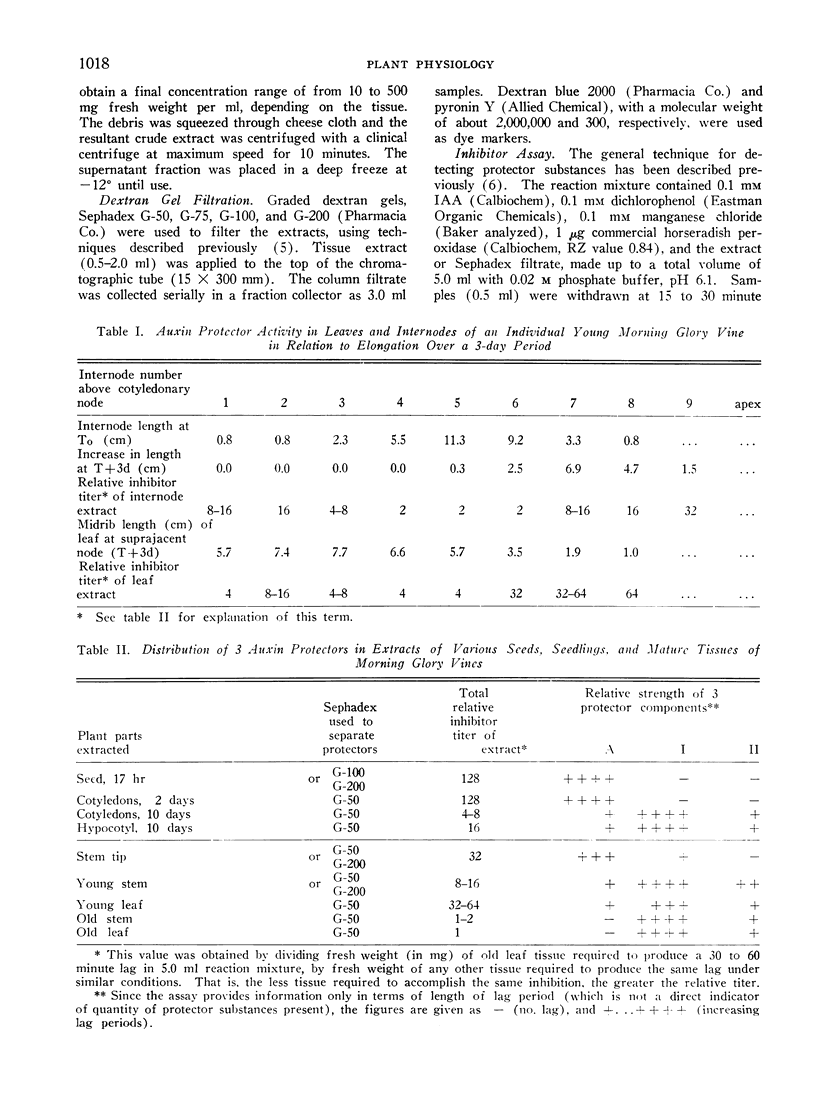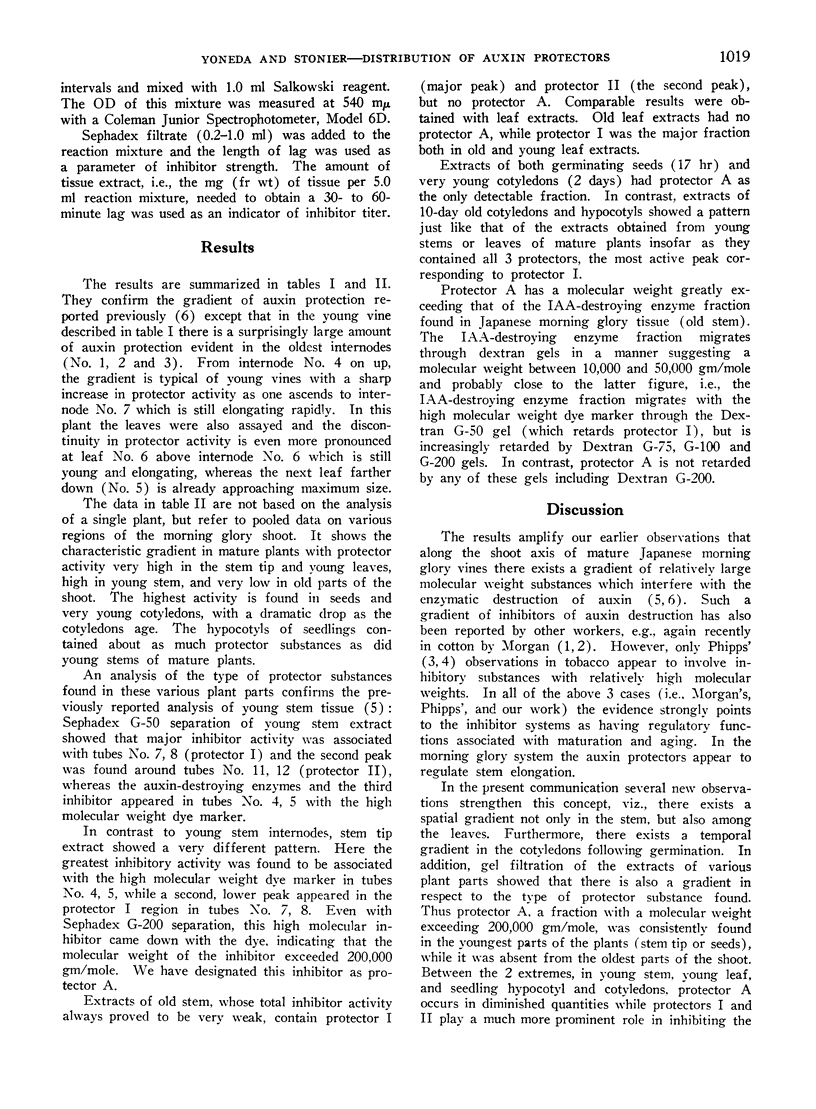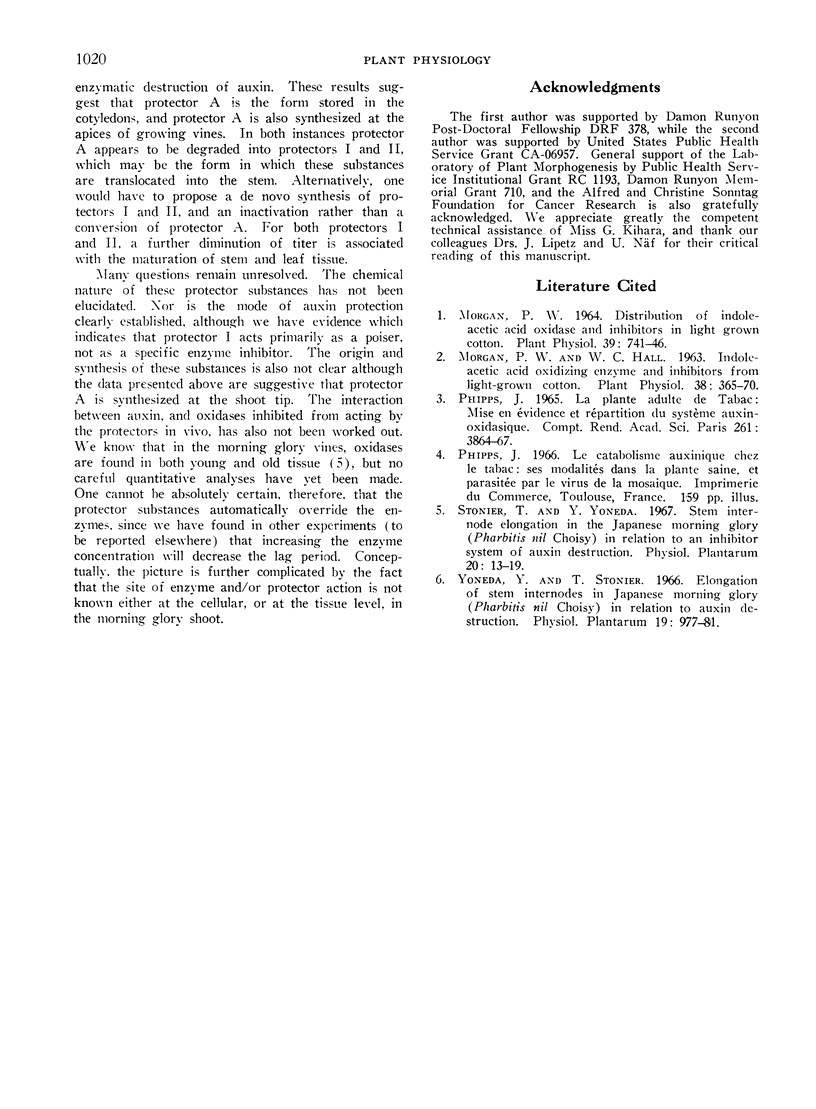Abstract
The existence of substances which inhibit the enzymatic destruction of auxin in shoots of the Japanese morning glory (Pharbitis nil Choisy) has been confirmed, as has the fact that these substances are distributed in a gradient diminishing from apex to base in a manner indicating a regulatory role in internode elongation and tissue maturation. In addition to the 2 auxin protector substances reported previously (protectors I and II) which appear to account for most of the inhibition of the enzymatic destruction of auxin in young, elongating stem tissue, a third substance, designated as protector A, has been found to be highly active in seeds, and shoot tips of mature plants: In germinating seeds, no protector I or II activity was observed; in stem tips, no protector II and only slight protector I activity was observed. In contrast, old tissue contained no detectable amounts of protector A, but did contain protectors I and II. Between these extremes along the shoot axis, mixtures of the 3 substances were found. The evidence can be interpreted to mean that protector A is degraded into protectors I and II and perhaps translocated in this form. Gel filtration studies indicate that protector A has a molecular weight exceeding 200,000 gm/mole.
Full text
PDF



Selected References
These references are in PubMed. This may not be the complete list of references from this article.
- Morgan P. W., Hall W. C. Indoleacetic Acid Oxidizing Enzyme & Inhibitors from Light-Grown Cotton. Plant Physiol. 1963 Jul;38(4):365–370. doi: 10.1104/pp.38.4.365. [DOI] [PMC free article] [PubMed] [Google Scholar]


